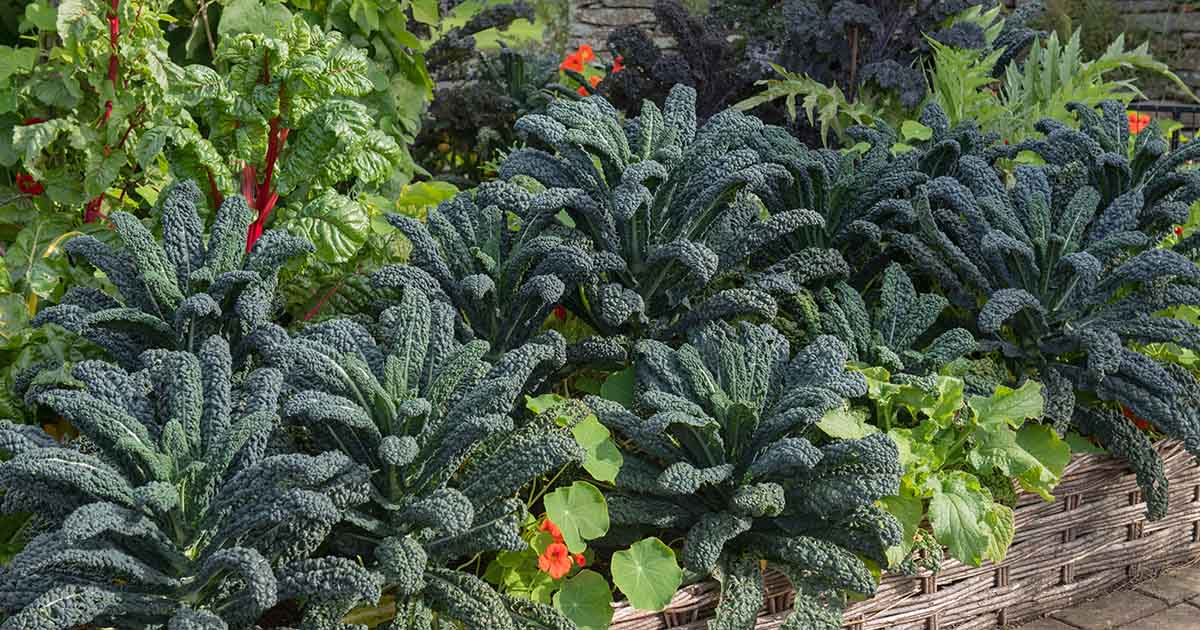The Ultimate Guide To Companion Planting Kale
The Ultimate Guide to Companion Planting Kale
Kale is a delicious and versatile vegetable that can be enjoyed in a variety of ways. It's also a relatively easy plant to grow, but there are a few things you can do to improve your chances of success. One of those things is companion planting.
Companion planting is the practice of planting certain plants together because they benefit each other in some way. For example, some plants attract beneficial insects that help to control pests, while others help to improve the soil quality.
There are a number of plants that make good companion plants for kale. Here are a few of the best:
- Alliums: Alliums, such as onions, garlic, and chives, have a strong scent that deters pests. They also help to improve the soil quality, which can benefit kale plants.
- Beans: Beans are nitrogen-fixing plants, which means they can help to enrich the soil with nitrogen. This can be beneficial for kale, which doesn't require a lot of nitrogen.
- Carrots: Carrots help to repel the carrot fly, which is a common pest of kale.
- Cucumbers: Cucumbers help to attract pollinators, which can help to improve the pollination of kale plants.
- Herbs: Many herbs, such as cilantro, dill, and mint, help to attract beneficial insects that prey on pests. They also help to improve the flavor of kale.
In addition to these plants, there are a few other things you can do to improve your chances of success when companion planting kale. First, make sure to plant your kale in full sun. Kale needs at least 6 hours of sunlight per day to thrive. Second, choose a well-drained soil that is rich in organic matter. Kale is not tolerant of wet, soggy soil.
Finally, be sure to water your kale regularly, especially during hot, dry weather. Kale needs about 1 inch of water per week.
By following these tips, you can help to ensure that your kale plants are healthy and productive. And by companion planting, you can also help to attract beneficial insects and improve the soil quality in your garden.
Kale is a versatile and delicious vegetable that can be enjoyed in many different ways. But did you know that there are certain plants that can help kale thrive? These are known as companion plants, and they can offer a variety of benefits to kale, such as deterring pests, attracting beneficial insects, and improving soil quality.
If you're interested in learning more about companion plants for kale, I recommend visiting Gardenia Inspiration. This website has a wealth of information on the topic, including a list of the best companion plants for kale, as well as tips on how to plant and care for these plants together.
FAQ of companion kale
Q: What are some good companion plants for kale?
A: Some of the best companion plants for kale include:
- Alliums: The allium family, which includes garlic, chives, shallots, leeks, and onions, can deter common pests with their strong scent and the oils they produce.
- Beans: Beans fix nitrogen in the soil, which can help to improve the growth of kale.
- Carrots: Carrots help to repel carrot root fly, a common pest of carrots.
- Marigolds: Marigolds are known for their insect-repelling properties, and they can help to keep pests away from kale.
- Spinach: Spinach and kale can be planted together because they have similar growing requirements.
Q: What are some plants that should not be planted near kale?
A: Some plants that should not be planted near kale include:
- Brassicas: Brassicas, such as broccoli, cabbage, and cauliflower, are susceptible to the same pests and diseases as kale, so it is best to avoid planting them together.
- Corn: Corn can compete with kale for water and nutrients.
- Potatoes: Potatoes can harbor the potato scab fungus, which can also infect kale.
Q: How do I plant companion kale?
A: When planting companion kale, it is important to space the plants 18 to 24 inches apart. This will give them enough room to grow and prevent them from competing for water and nutrients. It is also important to plant kale in full sun and well-drained soil.
Q: How do I care for companion kale?
A: Kale is a relatively easy plant to care for. It needs regular watering, especially during hot weather. It is also important to fertilize kale every few weeks with a balanced fertilizer.
Q: What are some common pests and diseases of companion kale?
A: Some common pests and diseases of companion kale include:
- Aphids: Aphids are small, sap-sucking insects that can damage kale leaves. They can be controlled with insecticidal soap or neem oil.
- Cabbage loopers: Cabbage loopers are caterpillars that can eat large holes in kale leaves. They can be controlled with Bacillus thuringiensis (Bt) or by handpicking.
- Flea beetles: Flea beetles are small, jumping insects that can damage kale leaves. They can be controlled with insecticidal soap or neem oil.
Image of companion kale
5 different images of "companion kale" from Pinterest:
- Kale and tomatoes: Kale and tomatoes are a classic companion plant combination. The kale shades the soil, keeping it cool and moist, which tomatoes love. The tomatoes, in turn, provide the kale with nitrogen, which it needs to thrive.

- Kale and carrots: Kale and carrots are another great companion plant combination. The kale helps to deter pests from the carrots, while the carrots help to improve the flavor of the kale.

- Kale and marigolds: Marigolds are a great companion plant for many vegetables, including kale. They help to repel pests and attract beneficial insects.

- Kale and beans: Beans are a nitrogen-fixing plant, which means they can help to improve the nitrogen content of the soil. This is beneficial for kale, which is a heavy feeder.

- Kale and spinach: Kale and spinach are both cool-season greens that can be planted together. They have similar growing requirements, so they are a good companion plant combination.

Post a Comment for "The Ultimate Guide To Companion Planting Kale"